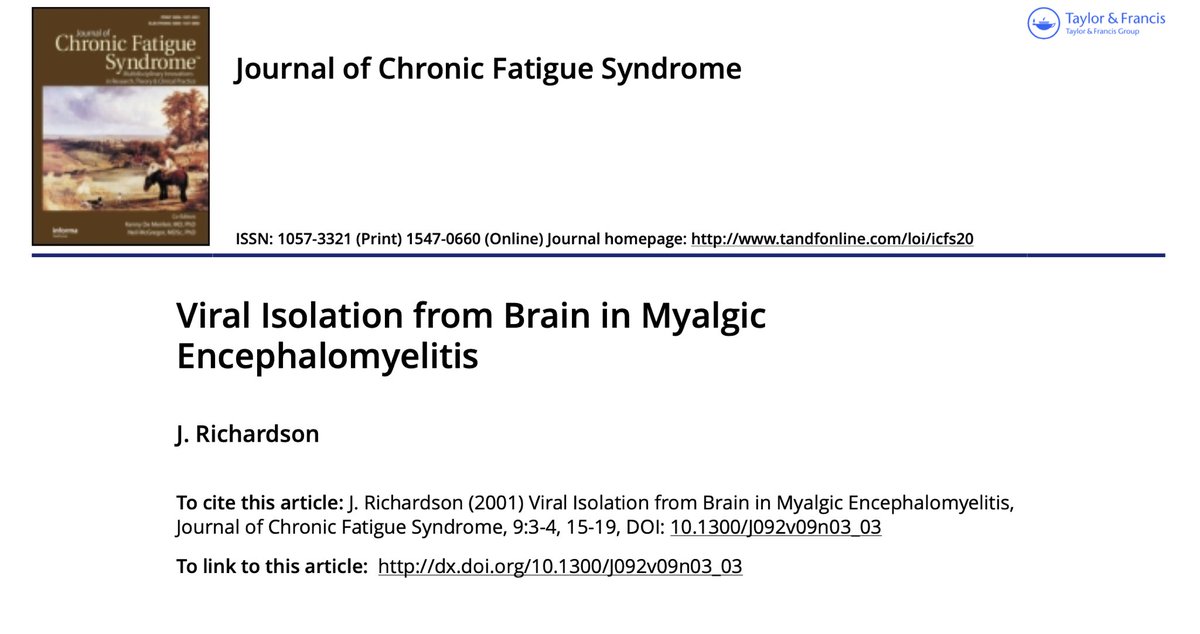
Microbiologist at PolyBio Research Foundation: helping research teams collaborate on infection-associated chronic disease #me #longcovid #lyme #eds @polybioRF




 23 subscribed
23 subscribed




 23 subscribed
23 subscribed
How to get URL link on X (Twitter) App





 23 subscribed
23 subscribed

https://twitter.com/microbeminded2/status/17774827565342438272/ The viral proteins were found in participant blood. Where did they come from? As described in our paper below, it’s possible that at least some of the proteins “leak” into blood from persistent reservoirs of SARS-CoV-2 in tissue (gut, lungs etc): pubmed.ncbi.nlm.nih.gov/37667052/

https://twitter.com/r_prior/status/17474181034603316912/ We have formed a global #Consortium to study SARS-CoV-2 persistence: to determine if reservoirs of the #virus in LongCOVID tissue can drive widespread dysfunction including clotting, #microbiome, and neuroimmune abnormalities: polybio.org/longcovid
https://twitter.com/loscharlos/status/17303754409495143702/ Pathogens harbored by a patient at the time of SARS-CoV-2 #infection may serve as a predisposing factor to either persistence of the virus or increased disease in the acute phase
https://twitter.com/VitalikButerin/status/17292518567808291442/ To advance this movement in which novel tools to study & contain airborne #pathogens are actively being built, one must reject the narrative that there are only two paths forward 1) To 'care' abt airborne #infection means lockdowns 2) Freedom means ignoring airborne infection

 2/ Specifically, they found that neuroPASC patients exhibited attenuated systemic antibody responses against #SARS-CoV-2, characterized by decreased capacity to activate antibody-dependent complement deposition, NK cell activation + to bind Fcγ receptors
2/ Specifically, they found that neuroPASC patients exhibited attenuated systemic antibody responses against #SARS-CoV-2, characterized by decreased capacity to activate antibody-dependent complement deposition, NK cell activation + to bind Fcγ receptors




https://twitter.com/Quicktake/status/16310378809309061132/ No one knows whether the coronavirus or its remnants remain in everyone who’s had Covid, or if it’s just a group of patients, said Timothy Henrich, an associate professor of medicine at the University of California, San Francisco.
https://twitter.com/fearnley_k/status/14956954803235102762/ Persistence of #SARS-CoV-2 in tissue could lead to shedding of spike protein into blood, which can catalyze the ongoing formation of microclots and hyperactivated platelets




https://twitter.com/microbeminded2/status/14737214483426877542/ Enteroviruses are (like SARS-CoV-2) single-stranded RNA viruses. They include the coxsackieviruses, poliovirus, echoviruses + rhinoviruses. These viruses cause about 10–15 million #infections each year in the USA alone



